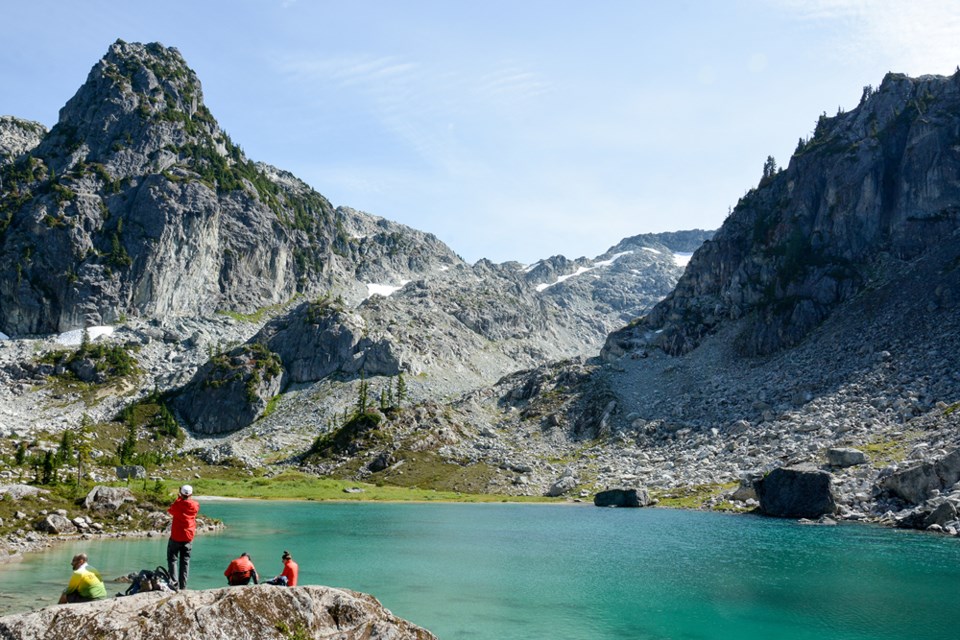A new guidebook published by a Lower Mainland author is shining a spotlight on some of Squamish’s best trails, even though some hikers may prefer their favourite trails avoid the added publicity.
Stephen Hui’s 105 Hikes In and Around Southwestern British Columbia, released at the end of May, is already a provincial best-seller, and features hikes from around Vancouver and the neighbouring regions, including eight trails in Squamish and others near the Cheakamus River, Whistler, Pemberton, Lillooet, and Howe Sound.
Hui, who has been hiking for 25 years, says he wrote the book for long-term hikers and a new generation of hikers, and weaves information about hiking ethics and the ‘leave no trace’ philosophy through the book. He hopes readers enjoy exploring some new trails in an environmentally responsible manner.
“I do like leading groups of hikers into places they haven’t hiked before … as well as encouraging people to be responsible about how they go into these areas,” he said.
But Hui knows not everyone is happy about him publicizing these trails, even though he takes into account areas that have sensitive terrain and wildlife, and chooses to leave some trails out of his book for that reason.
“Whenever I’ve written about hikes, people invariably get angry,” he said, adding that others have complained to him for choosing some trails, but excluding others. “A lot of these hikes already have information online … None of these hikes in the book are secret hikes.”
Even though these trails have been written about, whether in a guidebook, in a news story, or on social media, there is no doubt Squamish has recently seen significant increase in hiking traffic.
According to Tourism Squamish, there has been a 195 per cent increase in views on their website related to hiking content over the past five years. While they don’t have exact figures for the number of people using the trails, they track inquiries at the Visitor Centre. In 2017, 45 per cent of all information requests at the centre were related to hiking and trails. For the past three years, hiking and trails have stayed in the top spot for information requests
“Hiking ranks highly as a preferred activity for visitors to our region in general and hiking in British Columbia continues to be an important activity of choice for visitors coming to the province,” Heather Kawaguchi, manager of marketing and membership for Tourism Squamish, said in an email.
According to provincial government’s Recreation Sites and Trails B.C., there does seem to be a pattern of increased trail usage after new editions of guidebooks are released, although the information they have is anecdotal and based on observations. Even so, the impact of social media publicity – particularly in places like Joffre Lakes – is potentially more intense.
“While new additions of guidebooks have an effect of increased use, these books are less of an impact than social media, which seems to be playing a significant role in changing use patterns and providing more information on new trails,” reads an emailed response from Recreation Sites and Trails B.C.
Increased trail use doesn’t necessarily mean there is more litter. Littering is typically accidental and rarely intentional, and the presence of more people may have the effect of stopping littering because there are more people around to watch, they said.
More people on the trails isn’t necessarily a bad thing, said Matt Parker, president of the Squamish Trail Society.
“With increased trail usage, I think there’s an increase awareness that we are sharing the trails,” he said. “It’s a good thing for Squamish to be recognized.
While he acknowledges some people using the trails are not considerate, and others may be disappointed to find their former solitary hikes not so quiet anymore, having more people use the trails is not a problem as far as the trails are being used and maintained properly.
“We just need to exercise some responsibility,” he said. “We build trails for people to use them and have greater impact and appreciation. The more people that have that attitude and connection, I think they become advocates for our environment and for our trails.”



